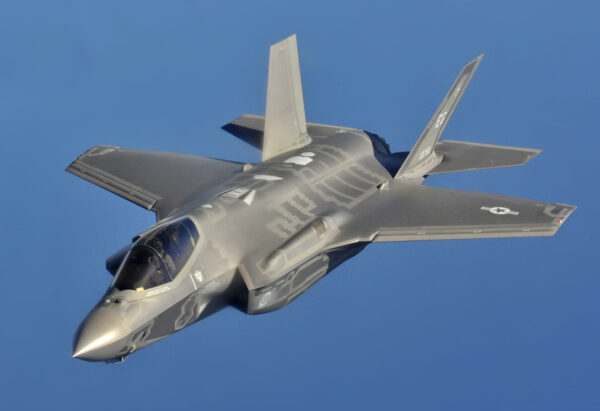An unusual situation has unfolded in the state of South Carolina, where a pilot of an F-35B ejected from the aircraft at approximately 2:00 p.m. local time on Sunday in a location north of Joint Base Charleston.
The pilot successfully deployed a parachute and landed in a residential area in Charleston, sustaining stable health. However, what’s puzzling is that the highly advanced stealth fighter he ejected from is currently missing.
The F-35B had its origins at Marine Corps Air Station Beaufort, known as a key hub for F-35B operations within the United States Marine Corps (USMC). It was part of a two-aircraft flight, with the other F-35B landing safely at Marine Corps Air Station (MCAS) Beaufort.
ances leading to the pilot’s ejection. Senior Master Sergeant Heather Stanton from Joint Base Charleston informed the press that, according to FAA data, efforts are underway to locate the missing aircraft in the Lake Moultrie and Lake Marion areas.
Interestingly, the Department of Defense (DoD) has stated that the F-35B was set on autopilot before the ejection event occurred.
While this situation may appear peculiar, instances of fighter aircraft continuing to operate in a ‘zombie state’ for extended periods, even after the pilot has left the cockpit, have occurred in the past.
One famous example is the ‘Cornfield Bomber’, an F-106 that safely landed on its belly after its pilot was ejected in 1970. Additionally, a Soviet MiG-23 flew from Poland to Belgium without a pilot after an ejection shortly after takeoff in 1988.
There have also been incidents during Navy carrier operations where aircrew ejected as their aircraft entered a stall state due to issues like a ’cold cat shot’ or engine problems during heavy takeoff loads. The absence of the crew, seats, and canopy, as well as the shift in the aircraft’s center of gravity, sometimes resulted in the aircraft recovering from the stall without anyone on board.
Regarding this particular incident, even the relatively shorter-ranged F-35B has a considerable operational range. When on autopilot, it could potentially fly hundreds of miles before running out of fuel and crashing, depending on its fuel status. A similar situation occurred last June with a non-responsive Citation business jet, though the crew and passengers remained on board that aircraft.
The fact that there have been no reports of a crash suggests that the F-35 may have gone down in a sparsely populated area. If it did run out of fuel, it likely did not produce a large fire or a loud crash that would have been immediately noticeable.
If it ended up in the Atlantic, finding it could be even more challenging. Additionally, the aircraft’s configuration and the functionality of its avionics systems are factors to consider. F-35s typically use radar reflectors during transit flights and often carry AIM-9X missile rails, but if this particular aircraft was in a fully stealthy configuration and had avionics issues, tracking it might have proven difficult.
Expensive problem
The US military is left with an expensive problem: it couldn’t find the jet, leading Joint Base Charleston to ask for help from residents.
“If you have any information that may help our recovery teams locate the F-35, please call the Base Defense Operations Center,” a post from the base read on X, formerly known as Twitter.
The plane is manufactured by Lockheed Martin and costs about $80 million
About the F35 B
Manufacturer: Lockheed Martin
Service: USMC
Armament: 2x AIM-120C air-to-air missiles; 2x 1,000-pound GBU-32 JDAM guided bombs
Propulsion: F135-PW-600
Speed: Mach 1.6 (1,200 mph)
Range: 900 nm
The F-35B Lightning II is the Marine Corps variant of the Joint Strike Fighter and features a vertical lift fan and pivoting engine nozzle to deliver vertical landing and short takeoff capability to expeditionary airfields. The F-35 will replace AV-8B Harrier IIs in the Marine Corps inventory.
Designed to operate from austere bases and a range of air-capable ships with its short takeoff/vertical landing capability, the F-35B can also takeoff and land conventionally from longer runways on major bases. F-35B aircraft have been delivered to the U.S. Marines and the U.K., whose forces are training together at the Integrated Training Center at Eglin Air Force Base. STOVL aircraft are also stationed at the first operational F-35 base, Marine Corps Air Station Yuma, Ariz., and are completing flight test at Naval Air Station Patuxent River, Md. The Italian Air Force will also operate the B-variant. The F-35B has a Lift Fan just behind the cockpit and an engine that can swivel 90 degrees when in short takeoff/vertical landing mode. Because of the Lift Fan, the STOVL variant has smaller internal weapon bay and less internal fuel capacity than the F-35A. It uses the probe and drogue method of aerial refueling.
The F-35’s low observable stealth allows it to safely enter areas without being seen by radars that 4th generation fighters cannot evade. The combination of the stealth features, the F-35’s active electronically scanned array (AESA) radar technology, and the aircraft’s ability to carry weapons internally means the F-35 can engage ground targets at long ranges without detection and use precision weapons to successfully complete air-to-ground missions.
Integrated sensors, information and weapons systems—combined with speed and maneuverability— are critical to the F-35’s air superiority. In air combat, 4th generation aircraft have a higher radar cross-section, which means they can more easily be seen by enemy fighters. A 5th generation fighter has a lower radar cross-section to allow the F-35 pilot to see the other aircraft first and take action.
TYP World/ News Agencies


Leave a Reply
You must be logged in to post a comment.